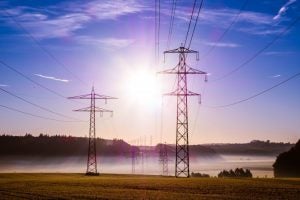 By Rama Zakaria
By Rama Zakaria
A new report by M.J. Bradley & Associates shows that coal-fired power plants are retiring primarily due to low natural gas prices and flattened demand, and that cleaner energy keeps our electric grid reliable.
The report estimates that coal plant closures caused less than 20 percent of the overall decline in coal generation over the past six years, and it affirms a recent Department of Energy (DOE) finding that the major driver behind U.S. coal plant closures is economics – namely, cheap natural gas. M.J. Bradley’s report also shows that new clean tech may enable the grid to begin performing better than ever.
Major findings
The M.J Bradley report confirms conclusions by multiple studies that show these are the three main factors that caused coal to decline:
- Increased competition from cheap natural gas – accounting for 49 percent of the decline,
- Reduced demand for electricity – accounting for 26 percent, and
- Increased growth in renewable energy – accounting for 18 percent.
According to the M.J. Bradley report, the overall decline in U.S. coal generation is primarily due to using coal plants less, rather than permanently closing them.
Also, most recently retired facilities were inefficient and relatively expensive to operate. On average, coal units that announced plans to retire between 2010 and 2015 were 57 years old –past their intended life span of 40 years.
Meanwhile, existing coal plant use has declined from 73 percent capacity factor in 2008 to 53 percent in 2016. At the same time, the use of cheaper natural gas combined-cycle plants has increased from 40 percent capacity factor to 56 percent.
[Tweet “New report: Clean tech boosts electric grid as coal use declines”]
A clean grid is a reliable grid
As coal plants retire and are replaced by cleaner resources, there have been concerns about impacts on our electric grid’s reliability. Those concerns were also the topic of Energy Secretary Rick Perry’s so-called baseload study of the U.S. power grid, even though a leaked version of the draft showed cleaner resources are creating new ways to maintain electric grid reliability.
‘Baseload’ is an outdated term used historically to describe how resources were being used on the grid, not to assess reliability.
As many studies have already indicated, “baseload” is an outdated term used historically to describe how resources were being used on the grid, not to assess reliability.
To assess the implications of coal retirements on the evolving resource mix, M.J. Bradley examined extensive existing research, including their own reliability report released earlier this year. These studies conclude that electricity in the U.S. remains reliable.
Clean tech boosts grid performance
The U.S. has long recognized the valuable grid services that new, clean technologies provide. Two examples are the Federal Energy Regulatory Commission (FERC) order on demand response and frequency regulation compensation.
More recently, FERC’s ancillary service reforms recognize that, with advances in technologies, variable energy resources like wind are increasingly capable of providing reliability services such as reactive power.
Grid operators – like California Independent System Operator and Midcontinent Independent System Operator – are using new technologies to create products and programs that encourage flexibility, which keeps the modern grid dynamic and robust.
It is important for regulators, system planners and operators to keep assessing modern grid needs and using technological solutions, along with market design and system coordination. Working together, America can have clean, healthy air and affordable, reliable electricity.
This post is adapted from the original on our Climate 411 blog.









